Find Help
More Items From Ergsy search
-
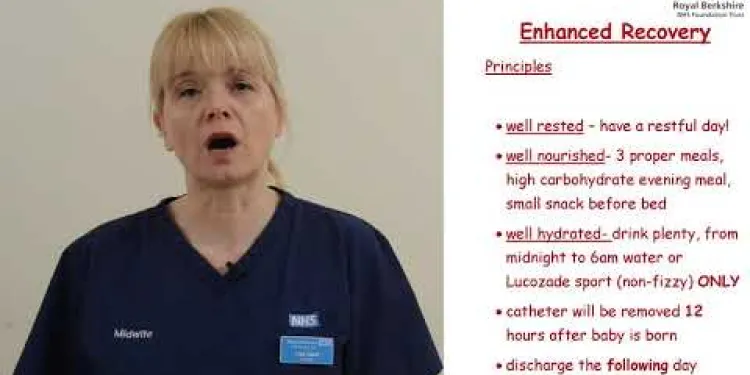
Pre operative Information for Planned Caesarean Birth
Relevance: 100%
-

Having a planned caesarean section
Relevance: 85%
-

What is a Caesarean birth?
Relevance: 83%
-
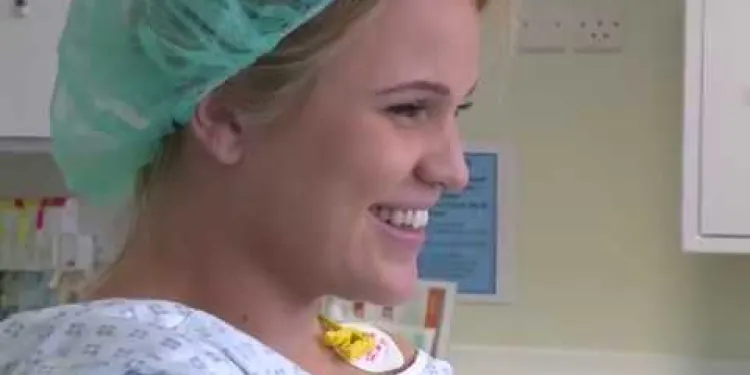
Your Caesarean birth
Relevance: 81%
-

Planned caesarean section
Relevance: 81%
-

Why might a Caesarean birth be necessary?
Relevance: 70%
-

Can I have a natural birth after a Caesarean section?
Relevance: 65%
-

Can I breastfeed after a Caesarean birth?
Relevance: 60%
-

Having a Caesarean Section
Relevance: 53%
-

Spinal Anaesthesia for Caesarean Section
Relevance: 47%
-

How long does it take to recover from a Caesarean birth?
Relevance: 47%
-

Can my partner be with me during the Caesarean section?
Relevance: 47%
-

ACL pre-operation exercises
Relevance: 47%
-
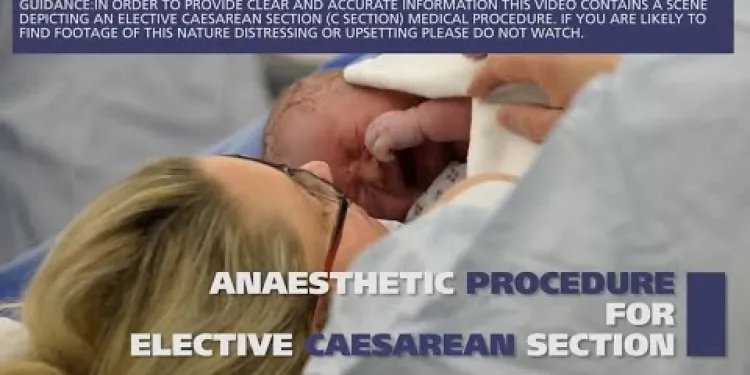
Anaesthetic procedure for elective caesarean section (C section)
Relevance: 42%
-

Is spinal anaesthesia safe for a Caesarean section?
Relevance: 41%
-

Can I breastfeed immediately after a Caesarean section under spinal anaesthesia?
Relevance: 34%
-

Student Finance: Should I pay more? | Plan 1 & Plan 2 | SF Explained
Relevance: 25%
-

Planning for your funeral
Relevance: 25%
-

What is an asthma action plan?
Relevance: 23%
-

Is a C-section a common procedure in the UK?
Relevance: 23%
-

How often should I review my pension plan?
Relevance: 22%
-

How can I plan for future care needs?
Relevance: 22%
-

Can a robo-advisor help with pension planning?
Relevance: 22%
-

Can funeral directors offer payment plans?
Relevance: 21%
-

Your anaesthetic choices for your planned hip or knee replacement surgery at the RUH.
Relevance: 21%
-

Do water companies have long-term infrastructure plans?
Relevance: 21%
-

Wills, Probate and Tax Planning in the UK
Relevance: 21%
-

The NHS Long Term Plan for learning disability and autism
Relevance: 20%
-

Do insurance plans cover the cost of self-testing tools?
Relevance: 20%
-

Could my payment plan affect how overpayments are handled?
Relevance: 20%
-

What is the role of independent financial advisors in pension planning?
Relevance: 20%
-
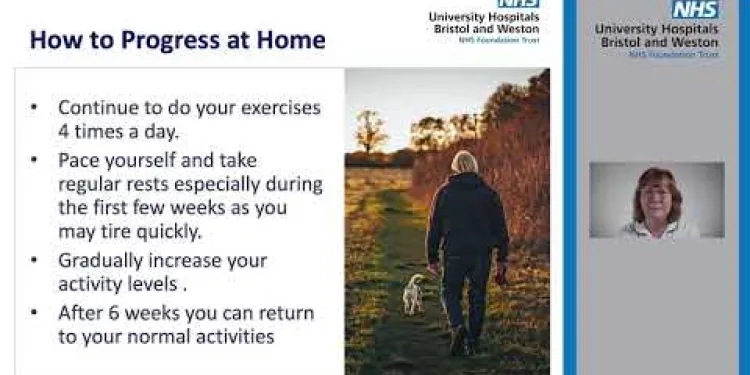
Enhanced Recovery - Hip
Relevance: 19%
-

How will the changes in pension age affect retirement planning?
Relevance: 19%
-

Planning Your Funeral in Advance? | Expert Tips from Celebrants
Relevance: 19%
-

What is an Education, Health and Care Plan (EHCP)?
Relevance: 19%
-

The Different Roles in Sexual Health and Family Planning UK
Relevance: 19%
-

HIV and pregnancy | NHS
Relevance: 19%
-
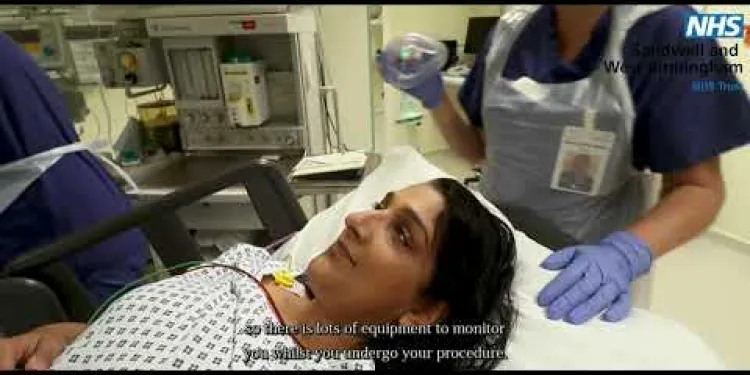
What to expect when visiting our hospitals for surgery | Theatres
Relevance: 18%
-

What is the new planned state pension age after 2028?
Relevance: 18%
-

NHS Winter Preparedness Plans Unveiled Amid Rising Seasonal Pressures
Relevance: 18%
Pre-operative Information for Planned Caesarean Birth
Understanding a Planned Caesarean Birth
A planned caesarean birth, also known as an elective C-section, is a scheduled surgical procedure to deliver a baby. It is typically planned due to medical reasons such as breech position, placental issues, or previous C-section deliveries. Understanding the need and the process of a caesarean section is essential for expecting mothers.
Pre-operative Assessments
Before your planned caesarean, you will attend a pre-operative assessment. This often includes blood tests, a general health check, and a discussion with an anaesthetist. The assessments ensure you are in optimal health for the procedure and allow the medical team to plan accordingly.
Medication and Fasting Instructions
It's important to follow specific instructions regarding medications and fasting. Usually, you will be asked not to eat or drink anything for about 6-8 hours before surgery to reduce the risk of aspiration during the procedure. Your healthcare provider will give detailed instructions tailored to your condition.
Hospital Admission and Preparation
You will typically be admitted to the hospital on the day of the elective caesarean or the evening before. The healthcare team will prepare you by providing a gown, setting up an IV line, and possibly shaving the surgical area. You will also meet the surgical team and have a final discussion about the procedure.
What to Expect During the Procedure
During the caesarean section, you will receive an anaesthetic, usually a spinal or epidural, which numbs the lower part of your body but allows you to stay awake. The procedure generally takes about 45 minutes to an hour. Your partner or a support person may be allowed in the operating room to provide comfort and support.
Post-operative Care and Recovery
After the surgery, you will be moved to a recovery area where you and your baby will be monitored closely. Pain management and post-operative care will be provided as needed. Typically, you will stay in the hospital for 2-4 days so the healthcare team can ensure both you and your baby are healthy before discharge.
Before Your Planned Caesarean Birth
What is a Planned Caesarean Birth?
A planned caesarean birth is a surgery to help you have your baby. It is planned ahead of time. You might need it for reasons like the baby is in a breech position (bottom down), placenta problems, or if you had a caesarean before.
Health Checks Before Surgery
Before your caesarean, you will have a health check. This might include blood tests and talking to a doctor about anaesthesia. These checks make sure you are ready for the surgery.
Instructions About Eating and Medicine
You will get instructions about what you can eat and drink. Usually, you should not eat or drink for 6-8 hours before the surgery. This keeps you safe. Your doctor will tell you exactly what to do.
Going to the Hospital
You will go to the hospital on the day of your caesarean or the night before. The healthcare team will help you get ready. They might give you a hospital gown and set up an IV line. You will also talk to the team about what will happen.
What Happens During the Surgery?
In surgery, you will get medicine to numb your lower body. You will be awake but won’t feel pain. The surgery takes about 45 minutes to an hour. A partner or support person can usually be with you to help you feel better.
Recovery and Care After Surgery
After your caesarean, you will go to a recovery area. You and your baby will be checked to make sure you are both okay. You might stay in the hospital for 2-4 days. The healthcare team will make sure you are healthy before you go home.
Frequently Asked Questions
What is a planned Caesarean birth?
A planned Caesarean birth is a surgical procedure scheduled in advance to deliver a baby through an incision in the mother's abdomen and uterus.
Why might a planned Caesarean be necessary?
A planned Caesarean may be necessary for various reasons, such as the baby being in a breech position, placenta previa, multiple pregnancies, previous Caesarean deliveries, or maternal medical conditions.
How do I prepare for a planned Caesarean birth?
Preparation includes attending preoperative appointments, fasting before the surgery as instructed, arranging for post-operative support at home, and packing a hospital bag with essential items.
What should I bring to the hospital?
Bring personal identification, your maternity notes, comfortable clothing, toiletries, baby clothes, nappies, and any prescribed medications.
Can my birth partner be present during the Caesarean?
Yes, in most cases, your birth partner can be present during the Caesarean to provide support and witness the birth of your baby.
What type of anaesthesia is used for a planned Caesarean?
The most common anaesthesia is a regional block, such as a spinal block or epidural, which numbs the lower part of your body while you remain awake.
How long does the Caesarean procedure take?
The surgery typically takes about 30 to 60 minutes, but this can vary depending on individual circumstances.
What can I expect immediately after the Caesarean?
You will be monitored in the recovery area for a few hours, where your vital signs and incision will be checked. Your baby will also be assessed and can often stay with you in the recovery area.
When can I start breastfeeding after a Caesarean?
You can usually start breastfeeding as soon as you feel comfortable in the recovery area. Hospital staff can assist you with positioning and latching.
How long will I stay in the hospital after a Caesarean?
The typical hospital stay is around 2 to 4 days, but this can vary based on your recovery and any complications.
What is the recovery process like after a Caesarean?
Recovery involves managing pain, caring for the incision site, avoiding heavy lifting, and gradually increasing activity. Full recovery can take about 6 weeks.
What pain relief will I have after the Caesarean?
You will receive pain relief medications, which may include oral painkillers or stronger medications, depending on your pain levels.
Are there risks associated with a planned Caesarean?
As with any surgery, there are risks including infection, blood clots, bleeding, and reactions to anaesthesia. Discuss potential risks with your healthcare provider.
Can I have skin-to-skin contact with my baby after a Caesarean?
Yes, many hospitals encourage immediate or early skin-to-skin contact to promote bonding and breastfeeding.
When can I start driving after a Caesarean?
You should avoid driving until you feel comfortable and free from pain while sitting and wearing a seatbelt, usually around 4 to 6 weeks post-surgery. Always check with your insurance policy and healthcare provider.
What is a planned Caesarean birth?
A planned Caesarean birth is when doctors decide to help a baby be born by doing an operation. This is planned before the day the baby is born. The doctor makes a cut in the mom's tummy to take the baby out safely.
If you find reading hard, you can use tools that read out loud or ask someone to read it to you. Picture books can also help you learn about this.
A planned C-section is a surgery. Doctors plan it ahead of time. They help the baby come out by making a cut in the mom's belly and womb.
Why might a planned C-section be needed?
Sometimes, doctors decide to deliver a baby by a special surgery called a C-section (or Caesarean). This means the baby is born through a cut in the mom's belly.
Here are some reasons why a C-section might be planned:
- If the baby is not in the right position to come out safely.
- If the mom has health problems that make a regular birth risky.
- If there are problems with the placenta, which helps give the baby food and oxygen.
- If the mom has had a C-section before and it’s safer to do it again.
Tools that can help you understand more:
- Talking to your doctor for more information.
- Looking at pictures or videos about C-sections.
- Asking someone to explain it to you with simple words.
Sometimes, doctors need to plan a Caesarean operation. This is when the baby is born through an operation instead of the usual way.
Here are some reasons why:
- The baby is not in the right position. This is called breech position.
- The placenta is blocking the way. This is called placenta previa.
- There is more than one baby. This is called multiple pregnancies.
- The mother had this operation before.
- The mother has health problems.
If you are worried about understanding this, you can use tools like picture stories or ask someone to explain it with simple words. Talking to a doctor or a nurse can also help.
How do I get ready for a planned Caesarean birth?
A Caesarean birth is when a baby is born through an operation. Here is how you can get ready:
- Talk to your doctor: Ask questions and understand what will happen.
- Pack a bag: Bring comfy clothes, snacks, and things you need for you and your baby.
- Make a plan with your family: Decide who will help you at the hospital and at home afterwards.
- Rest and eat healthy: Sleep well and eat good food to be strong and ready.
Helpful tools:
- Use a calendar to remember important dates.
- Write down questions for your doctor to take with you.
Get ready for your surgery by doing these things:
1. Go to your doctor appointments before the surgery.
2. Don’t eat or drink anything before the surgery when the doctor tells you to.
3. Ask someone to help you at home after the surgery.
4. Pack a bag with important things to take to the hospital.
What should I take to the hospital?
Here is a list to help you:
- Comfortable clothes
- Any medicine you take
- Phone and charger
- Snacks and water
- Something to read or play with
Use pictures or ask someone to help you pack. You can also use apps that remind you what to take.
Bring your ID, your pregnancy notes, comfy clothes, washing things, baby clothes, diapers, and any medicine your doctor gave you.
Can my birth partner be there during the C-section?
Yes, most of the time, your birth partner can be with you during the C-section. They can help and see your baby being born.
What kind of pain relief is used for a planned Caesarean?
When a baby is born by surgery, doctors use medicine so the mum doesn't feel pain.
This is called anaesthesia.
For a planned Caesarean, doctors usually use one of two types:
- Spinal anaesthesia: This is when the doctor puts medicine in the mum's back. It makes the mum's tummy feel numb. She stays awake but doesn't feel pain.
- Epidural anaesthesia: This is when the doctor puts a small tube in the mum's back. Medicine goes through the tube to keep the tummy numb. She stays awake but doesn't feel pain.
If you want more help, you can:
- Ask your doctor or nurse to explain.
- Bring someone with you to help listen and ask questions.
The doctors often use something called a regional block. It helps you not feel pain in the lower part of your body. One type is a spinal block and another is an epidural. You will stay awake when they use this.
To help understand better, you can use picture cards or listen to someone read it aloud.
How long does a C-section take?
A C-section is an operation to help a baby be born. It usually takes about 45 minutes to 1 hour. Doctors work together to do this quickly and safely.
If you are waiting, you might want to bring a book or some music to help pass the time.
The operation usually lasts between 30 minutes and 1 hour. But it might be different for some people.
If it is hard to understand, you can use tools to read it out loud or ask someone to help explain.
What happens right after a C-section?
After you have a C-section, the doctors will take care of you. You might feel sleepy. You will be in a special room to rest. Nurses will check on you to make sure you are okay. You will have a big bandage on your tummy. It might feel sore.
It is okay to ask for help. Family or friends can be there to support you. You will soon see your baby. The nurses will help show you how to hold and feed your baby.
If you feel worried or have questions, talk to the nurses or your doctor. They are there to help you feel better.
Using a pillow to hold against your tummy can help if you need to cough or laugh. It can make it less sore.
You will stay in the recovery area for a few hours. Nurses will check how you are doing and look at your wound. Your baby will also be checked and can often stay with you there.
When can I start breastfeeding after a Caesarean?
You can start breastfeeding right after your baby is born and you feel ready. This can be in the first hour. Ask the nurse or doctor for help to hold your baby safely if you need it.
Here are some things that can help you:
- Ask someone to show you how to hold your baby.
- Use a comfy pillow to support you and your baby.
- Take deep breaths and stay calm.
You can start feeding your baby with breast milk when you feel ready after giving birth. The nurses and doctors in the hospital can help you with how to hold your baby and help your baby latch on.
How long do I stay in the hospital after a C-section?
After you have a C-section, you usually stay in the hospital for 3 to 4 days. This helps doctors make sure you and your baby are okay. It's important to rest and heal. If you have questions, ask the nurses. You can bring a book, a toy, or listen to music to feel better. Having someone visit can also help.
Most people stay in the hospital for about 2 to 4 days. But some might stay longer if they need more help to get better.
What happens after a C-section?
After a C-section, your body needs time to heal. You might feel tired or sore. Doctors and nurses will help you. They might give you medicine for pain. Rest is important. Try to sleep when your baby sleeps. Eat healthy food and drink water. Ask family or friends to help you at home.
Tools that might help you feel better include pillows to support your tummy and loose clothes. It's okay to ask for help.
Getting better takes time. You need to take care of any pain and look after where you had the surgery. Don't lift anything heavy. Start moving more a little at a time. It might take about 6 weeks to feel all better.
What medicine will help me feel better after the C-section?
If you have a C-section, the doctor will give you medicine to help with the pain. This helps you feel better and heal faster.
Here are some things that might help:
- Ask the doctor or nurse about how the medicine works.
- Use a pillow to support your tummy when you move or cough.
- Try to rest and sleep when you can.
- Ask for help from family and friends.
- Listen to relaxing music or try deep breathing to feel calm.
You will get medicine to help with pain. This could be pills you swallow or stronger medicine if your pain is bad.
Are there any risks with a planned Caesarean?
A doctor might recommend some helpful tools. For example, using pictures and simple words can make things clearer.
All surgeries have risks. These can be:
- Getting an infection (when germs make you sick)
- Blood clots (when blood gets stuck in your body)
- Bleeding (when blood comes out of your body too much)
- Reactions to anaesthesia (when your body doesn’t like the sleep medicine)
Talk to your doctor or nurse about these risks. They can help you understand.
If reading is hard, you can:
- Ask someone to read it with you.
- Use a finger to follow the words.
- Take breaks when you need.
Can I touch my baby skin-to-skin after a C-section?
Yes, you can touch your baby right after a C-section. Skin-to-skin contact is good for both of you. It helps you feel close and keeps your baby warm.
Ask your nurse or doctor to help if you need it. They can show you how to hold your baby safely.
Using a comfy pillow or blanket can make it easier.
Yes, a lot of hospitals say it is good to have skin-to-skin contact right after birth. This helps moms and babies feel close and helps with breastfeeding.
When can I start driving after having a C-section?
After you have a C-section, which is a special operation to help your baby be born, you need some time to heal. Here are some tips for knowing when you can start driving again:
- Ask your doctor: Before you start driving, talk to your doctor. They will tell you when it is safe.
- Listen to your body: Make sure you feel strong and not in pain when you try to drive.
- Practice first: You can ask a family member or friend to sit with you in the car while you try driving a short distance.
- Give it time: Usually, you may need to wait about 4 to 6 weeks after the operation before driving.
If you are not sure, always ask for help. It is important to be safe!
Don’t drive a car until you feel okay. You should not feel any pain when you sit or wear a seatbelt. This is usually about 4 to 6 weeks after your surgery. Remember to talk to your doctor and check your car insurance before driving.
Useful Links
- Ergsy carfully checks the information in the videos we provide here.
- Videos shown by Youtube after a video has completed, have NOT been reviewed by ERGSY.
- To view, click the arrow in centre of video.
- Most of the videos you find here will have subtitles and/or closed captions available.
- You may need to turn these on, and choose your preferred language.
- Go to the video you'd like to watch.
- If closed captions (CC) are available, settings will be visible on the bottom right of the video player.
- To turn on Captions, click settings .
- To turn off Captions, click settings again.
More Items From Ergsy search
-

Pre operative Information for Planned Caesarean Birth
Relevance: 100%
-

Having a planned caesarean section
Relevance: 85%
-

What is a Caesarean birth?
Relevance: 83%
-

Your Caesarean birth
Relevance: 81%
-

Planned caesarean section
Relevance: 81%
-

Why might a Caesarean birth be necessary?
Relevance: 70%
-

Can I have a natural birth after a Caesarean section?
Relevance: 65%
-

Can I breastfeed after a Caesarean birth?
Relevance: 60%
-

Having a Caesarean Section
Relevance: 53%
-

Spinal Anaesthesia for Caesarean Section
Relevance: 47%
-

How long does it take to recover from a Caesarean birth?
Relevance: 47%
-

Can my partner be with me during the Caesarean section?
Relevance: 47%
-

ACL pre-operation exercises
Relevance: 47%
-

Anaesthetic procedure for elective caesarean section (C section)
Relevance: 42%
-

Is spinal anaesthesia safe for a Caesarean section?
Relevance: 41%
-

Can I breastfeed immediately after a Caesarean section under spinal anaesthesia?
Relevance: 34%
-

Student Finance: Should I pay more? | Plan 1 & Plan 2 | SF Explained
Relevance: 25%
-

Planning for your funeral
Relevance: 25%
-

What is an asthma action plan?
Relevance: 23%
-

Is a C-section a common procedure in the UK?
Relevance: 23%
-

How often should I review my pension plan?
Relevance: 22%
-

How can I plan for future care needs?
Relevance: 22%
-

Can a robo-advisor help with pension planning?
Relevance: 22%
-

Can funeral directors offer payment plans?
Relevance: 21%
-

Your anaesthetic choices for your planned hip or knee replacement surgery at the RUH.
Relevance: 21%
-

Do water companies have long-term infrastructure plans?
Relevance: 21%
-

Wills, Probate and Tax Planning in the UK
Relevance: 21%
-

The NHS Long Term Plan for learning disability and autism
Relevance: 20%
-

Do insurance plans cover the cost of self-testing tools?
Relevance: 20%
-

Could my payment plan affect how overpayments are handled?
Relevance: 20%
-

What is the role of independent financial advisors in pension planning?
Relevance: 20%
-

Enhanced Recovery - Hip
Relevance: 19%
-

How will the changes in pension age affect retirement planning?
Relevance: 19%
-

Planning Your Funeral in Advance? | Expert Tips from Celebrants
Relevance: 19%
-

What is an Education, Health and Care Plan (EHCP)?
Relevance: 19%
-

The Different Roles in Sexual Health and Family Planning UK
Relevance: 19%
-

HIV and pregnancy | NHS
Relevance: 19%
-

What to expect when visiting our hospitals for surgery | Theatres
Relevance: 18%
-

What is the new planned state pension age after 2028?
Relevance: 18%
-

NHS Winter Preparedness Plans Unveiled Amid Rising Seasonal Pressures
Relevance: 18%


